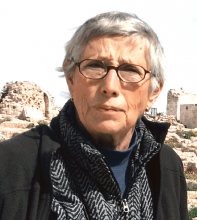You are here
Israel’s lethal ‘rules of engagement’
May 06,2015 - Last updated at May 06,2015
This past week two damning reports have been issued about the conduct of Israeli forces in last summer’s 50-day war on Gaza.
One, an internal UN report, covered Israeli attacks on seven UNRWA schools that had been identified by the agency as shelters for Palestinians driven from their homes by the Israeli onslaught.
UNRWA had notified the Israeli army command that the schools were packed with civilians and given the Israelis the map coordinates of the schools. Nevertheless, they were hit by tank fire, mortar shells and in one case a precision-guided missile that landed “five to six metres from the school gate”, slaying 15.
Forty-four Palestinians were killed and 227 wounded in these attacks.
No weapons were found in the targeted schools, but in three others which were vacant at the time.
In a letter accompanying the publicised summary of the still secret 207-page inquiry document, UN Secretary General Ban Ki-moon argued that UN premises were meant to be “places of safety” that should have been “inviolable”.
The other report was issued by Breaking the Silence, an Israeli activist group founded by soldiers critical of Israel’s actions in the occupied Palestinian territories and treatment of Palestinians.
The booklet contains testimony from 60 soldiers who took part in the Gaza campaign.
The second interviewee, a first sergeant in the mechanised infantry who served in Deir Al Balah, stated: “The rules of engagement are pretty identical: Anything inside [the Gaza Strip] is a threat, the area has to be ‘sterlised’ empty of people — and if we don’t see someone waving a white flag, screaming, ‘I give up’ or something — then he’s a threat and there’s authorisation to open fire.”
Opening fire means: “Shooting to kill. This is combat in an urban area, we’re in a war zone. The saying was: ‘There’s no such thing there as a person who is uninvolved’.”
The third interviewee, a sergeant first class in an armoured corps unit who served in Gaza City, said that people looking at the Israelis “from a window of a house… in your designated area — they, to put it mildly, won’t look anymore”.
The fifth, another first sergeant in the armoured corps, said his commander stated: “We do not take risks, we do not spare ammo — we unload, we use as much as possible.”
Number six, another armoured corps first sergeant made it clear that the “rules of engagement” did not distinguish between “terrorist” and “non-terrorist” targets.
The troops were told: “There’s a house and we’ll go in first with the air force, and then with tank shelling, and then you guys go in ‘wet’ [with live fire].”
He considered the offensive against Gaza a “war” rather than an “operation”.
Finally, the 17th interviewee, a first sergeant in the infantry operating in the northern Gaza Strip, testified: “There weren’t really any rules of engagement, it was more protocols. The idea was, if you spot something — shoot… If you shoot someone in Gaza, it’s cool, no big deal.”
This attitude and the lack of accountability for breaching global rules of engagement have also been translated to the West Bank and East Jerusalem where Palestinians are routinely beaten, shot and killed by Israeli troops.
On April 14, 2013, the Israeli human rights group B’Tselem issued a press release on the case of Samir Awad, a 16-year-old Palestinian youth who was shot in the back while fleeing after an incident adjacent to the wall near the West Bank village of Budrus.
B’Tselem complained that more than two years passed before the prosecutor decided to take action and criticised him for filing an indictment for committing a “reckless and negligent act using a firearm”, a minor offense in Israeli law.
According to media reports cited by B’Tselem, the “initial investigation by the Israeli military found that ‘Awad was shot in contravention of open-fire regulations’ [which] permit soldiers to use live ammunition only in cases of real and immediate mortal danger.”
Many shootings appear to be in contravention of such “regulations”, which do not regulate or limit soldiers’ authority to shoot.
During my recent trip to Jerusalem, I visited Palestinian victims of Israeli army shootings. One, Imad, 17, a resident of Shuafat refugee camp on the edge of Jerusalem, was shot in the eye while trying to change a large Israeli shekel note. He is employed in his father’s shop selling chickens.
“I left school at the eighth grade to work here after my father fell ill. I now have an assistant because I cannot concentrate due to the shooting.”
He has a glass eye and a platinum plate in his head to repair the fracture at the front of his skull.
Saleh, a unsmiling small boy, was ten-and-a-half on November 13, 2014, when he was wounded in the town of Al Azariya (Bethany), located on the hills above East Jerusalem.
He had gone to a shop and was caught up in clashes between Palestinian youths and Israeli soldiers. He was taken to the Hadassa hospital at Ein Karem and operated on after the incident.
A family friend said: “He got a bullet in one eye and he is losing the sight in the other. He worries about how he looks and cannot go anywhere without someone accompanying him due to trauma. He cannot play with his friends. He used to play football and ride his bicycle. He went back to school but was told he had to go to a school for people who have disabilities [where] he will learn Braille.
“His father cannot work. He was shot and injured during clashes at a funeral. There is random shooting at funerals.”
During our conversation, Saleh sat silently on the divan, not moving, not responding, a sad, deeply disturbed child whose life has been brutally changed by Israel’s lax “rules of engagement” that are protested not only by B’Tselem but also by disaffected soldiers who risk censure and, perhaps, punishment for going public.













